« Archive for March, 2008
posted by
Shawn, on March 27th, 2008 at 07:58 am, in category Uncategorized
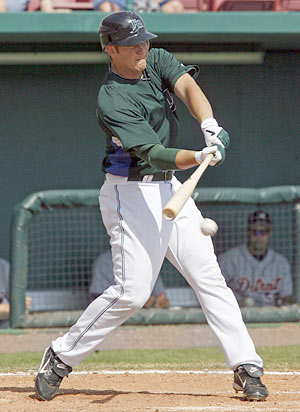 This is from RotoTimes.com, a site I actually like when it doesn’t try to delve too far into analysis:
This is from RotoTimes.com, a site I actually like when it doesn’t try to delve too far into analysis:
Willy Aybar remains out of the lineup due to a sore hamstring, according to the Tampa Tribune. Aybar may still be able to start at third base on opening day. He’ll hold down the role until the Rays listen to reason and call up Evan Longoria.
The “reason” they seem to be referring to is that Longoria is a better player than Aybar, and therefore should be the team’s starting third baseman. This has been a popular rallying cry the past few weeks, both on the blogosphere as well as in the mainstream media.
But if we’re really using reason and rational decision making, promoting Longoria for the start of the season is ludicrous. Consider the upside; if Longoria is an 8.0 WARP player right now (a fairly generous assumption, well above his PECOTA projection) and Aybar is, say, a 2.5 WARP player (which PECOTA does, but in only half a season’s worth of plate appearances), the difference between the two is a bit under a win per month. So if Longoria spends the first two months in Tampa instead of Durham, the Rays could see a net gain of about two wins (remember, though, that this is a high end estimate, so the real number may be closer to 1-1.5 wins).
Now, consider the downside. If Longoria spends the entire season in the big leagues, as Alex Gordon did last year, he’ll become a free agent at the end of the 2013 season, instead of the 2014 season. Even if he sticks around, his cost for 2014 would be millions of dollars higher than if he was still in his final year of arbitration.
There is also the possibility, of course, that he won’t stick around, forcing the Rays to replace a star-caliber third baseman in his age-28 season. This would likely cost them far more than two wins in 2014, when the team is a good bet to be at a more mature stage than they are right now.
The Gordon situation is a pretty good comp. Gordon spent the entire 2007 season (his second full year professionally) in Kansas City, struggling to a .247/.314/.411 line as the team went 69-93. For that performance, the Royals essentially traded his age-29 season. Had he started the season at Omaha, or been sent down after hitting .185/.301/.298 through the end on May, Kansas City would have still controlled his rights for the extra year.
In the end, unless those two wins end up costing Tampa Bay a playoff appearance this season (certainly possible, but not all that likely), the Rays will almost certainly come out ahead by keeping Longoria in the minors for the next month or two. And don’t forget, this is a 22 year old with 128 plate appearances above AA. As impressive as he has been, and despite all the hype, he’s as much of an unknown quantity as Gordon was entering last year.
Regardless, he should be up soon enough, and everybody will likely be better off. The Rays’ front office members should pat themselves on the back, as they’re making a very prudent decision despite some very negative press.
Feedback? Write a comment, or e-mail the author at shawn(AT)squawkingbaseball.com
posted by
Shawn, on March 26th, 2008 at 07:39 am, in category Uncategorized
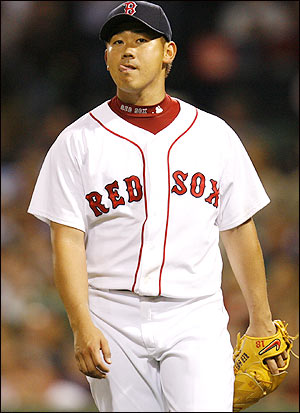 Yesterday I wrote about Major League Baseball’s presence in the Far East, and the Wall Street Journal conveniently ran a story on the same subject. As a refresher:
Yesterday I wrote about Major League Baseball’s presence in the Far East, and the Wall Street Journal conveniently ran a story on the same subject. As a refresher:
I would love to see some studies on whether these trips to Japan (as well as China this spring) really lead to sustainable revenue growth from the Far East. Conventional wisdom has always said that the NBA penetrated Europe after the first Dream Team demolished the rest of the world in the 1992 Olympics. But with baseball, hasnÕt it been the other way around, in that baseball has grown overseas due to the presence of foreign-born players on Major League rosters? This may be a chicken-and-egg conversation, but interesting and significant nonetheless.
The Journal article answers some very basic questions. Licensed MLB merchandise sales reached $103.7 million last year, up from $36.6 million in 2000, when the Mets and Cubs opened the season in the Tokyo Dome. MLB is also in the midst of a six year, $235 million television contract with Japanese advertising company Dentsu.
The article also mentions that more and more Japanese corporations are putting sponsorship dollars into American teams, but no dollar figures are given. These deals can be lucrative for the individual teams that are popular in Japan, such as the Red Sox, Mariners, and Yankees, all of whom have prominent Japanese signs in their ballparks. But on an industry-wide level, I would be stunned if the total dollar number topped $20-30 million.
In total, these three areas should account for about $170 million annually, which is certainly significant, but still only represents about three percent of MLB’s business.
It’s fair to say that most of this revenue can be attributed to the presence of high profile Japanese players on Major League rosters. The Red Sox are popular in Japan because of Daisuke Matsuzaka, not because of some out of the box marketing scheme.
The key, then, should be maximizing the talent pool coming out of Japan, as well as other foreign countries. Several teams, including the Yankees, Red Sox, and Dodgers, have also created a presence in China, looking to cash in on the potential windfall that could come from employing the first true Chinese superstar (whoever and whenever).
I’m not sure MLB has done a perfect job in monetizing itself internationally, but they seem to be doing the right things on a grassroots level. These trips can’t hurt, and there has been a larger emphasis on foreign youth leagues in the past few years. And don’t forget, for all the complaining about the WBC, it can only help build interest in countries that would have never seen their players go against Alex Rodriguez or Albert Pujols. And the more countries that develop Major League-quality talent, the easier it will be for the thirty teams to expand in those areas.
Feedback? Write a comment, or e-mail the author at shawn(AT)squawkingbaseball.com
posted by
Shawn, on March 25th, 2008 at 07:43 am, in category Uncategorized
Right to it:
- So it’s sorta, kinda Opening Day. I would love to see some studies on whether these trips to Japan (as well as China this spring) really lead to sustainable revenue growth from the Far East. Conventional wisdom has always said that the NBA penetrated Europe after the first Dream Team demolished the rest of the world in the 1992 Olympics. But with baseball, hasn’t it been the other way around, in that baseball has grown overseas due to the presence of foreign-born players on Major League rosters? This may be a chicken-and-egg conversation, but interesting and significant nonetheless.
- There hasn’t been a consensus agreement on the Miguel Cabrera deal at this point, but it really makes all sorts of sense for both sides. On a strict scientific scale, the Tigers may be overpaying a bit; on the other side, Cabrera likely left money on the table, relative to what he could have gotten as a free agent. But both sides are simply paying a premium for some added security: the Tigers get a very high level performer during his prime years, while Cabrera cashes in on what should be the first of two monster contracts in his career.
- I’ve written all winter that the Pirates should have been looking to deal Freddy Sanchez instead of Jason Bay. Sanchez is a fan favorite, and only a year removed from winning the National League batting title. But that might be the point; at 30 years old, his value has likely peaked. He’s had a bum right shoulder all spring, and won’t be able to play in the field to start the season. It’s tough to say what the Bucs could have gotten back for him, but this is the only checkpoint against Neal Huntington in his first offseason.
Feedback? Write a comment, or e-mail the author at shawn(AT)squawkingbaseball.com
posted by
Mike, on March 18th, 2008 at 08:23 am, in category Uncategorized
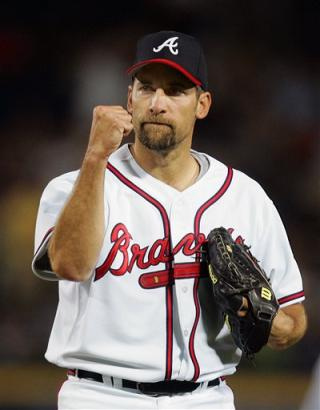 In case you missed it, we ran through the American yesterday. Now on to the senior circuit. For entertainment purposes only:
In case you missed it, we ran through the American yesterday. Now on to the senior circuit. For entertainment purposes only:
Arizona Diamondbacks Ð 86.5
Under: The Diamondbacks won 90 games last year, despite allowing more runs then they scored. Dan Haren is a nice addition, but heÕs allowed an average of 27 home runs over the last three seasons in a much more pitcher-friendly environment. Chris Young, Stephen Drew, Justin Upton, and the like will have to progress significantly for the D-Backs to return to the postseason.
Atlanta Braves Ð 84.5
Over: Andruw Jones is gone, Chipper Jones is another year older, Jeff Francoeur is still vastly overrated… and IÕm still taking the over. Atlanta underplayed their run differential last season, and a full season of Mark Teixeira should only help. Look for Smoltz and co. to be a darkhorse in the National League this year.
Chicago Cubs Ð 87.5
Over: The Cubs have quietly improved themselves a great deal, adding Kosuke Fukudome and shifting Geovany Soto into the everyday lineup. Rich Hill should have at least one or two superstar-caliber seasons in his career; if 2008 is one of them, the Cubs could beat that number handily.
Cincinnati Reds Ð 79.5
Over: This team could be competitive, if managed correctly; I don’t have that much faith. But they are talented enough regardless to beat up on the Pirates and Astros and play .500 baseball.
Colorado Rockies Ð 82.5
Over: Those 90 wins last year were not an aberration; the Rockies led the National League in run differential. Even if things don’t break quite as perfectly as last year, Colorado should be able to top 82.5.
Florida Marlins Ð 68.5
Over: Miguel Cabrera and Dontrelle Willis are gone, but there’s still some substance left over. Hanley Ramirez is a stud at shortstop, and Dan Uggla has become a very productive second baseman. If 2007 was Jeremy Hermida’s coming out party, 2008 could be the year he establishes himself as a true star. This isn’t a good team, but they should be able to reach 70 wins.
Houston Astros Ð 72.5
Under: Somebody has to lose to the Pirates.
Los Angeles Dodgers Ð 87.5
Over: Perhaps this is a bet on sensibility overcoming familiarity. The Dodgers have the horses to win the NL West, but Joe Torre may still need to figure that out. A pretty good pitching staff should carry them in the early going, until Joe and his staff finally work up the courage to put Juan Pierre and Nomar Garciaparra out to pasture.
Milwaukee Brewers Ð 84.5
Over: There is just too much talent here to bet the under. Team defense was the crux in 2007, a problem that should be softened a bit with Mike Cameron in centerfield and Ryan Braun off of third base.
New York Mets Ð 93.5
Over: On paper at least, the Mets are the best team in the National League. Their starting rotation, which was the big question only a few months ago, now looks to be one of the best in baseball. If Johan Santana and Pedro Martinez can stay healthy, this will be a very tough team to beat.
Philadelphia Phillies Ð 87.5
Under: The Phillies’ starting rotation needs a lot of help, which is not a good sign given the increased competition in the NL East. They failed to get better this offseason, perhaps Standing Pat for the final time. This looks to be a third place team in a tough division.
Pittsburgh Pirates Ð 68.5
Over: This one will come down to the wire. I’m going with a slight over, only because the new management team should fill in holes better than the old one did. Look for Jason Bay to rebound a bit, possibly becoming a more valuable piece of trade bait by midseason.
San Diego Padres Ð 84.5
Over: The Padres aren’t a great team by any means, but 85 wins should be reachable. There is a lot of upside to this pitching staff, particularly if Mark Prior is healthy. Team defense could become an issue.
San Francisco Giants Ð 71.5
Under: Possibly the worst offensive team in recent memory. Matt Cain’s 7-16, 3.65 ERA season may have only been the start.
St. Louis Cardinals Ð 78.5
Under: If the Cardinals fall out of the race early, we may see Albert Pujols finally go under the knife to repair his damaged elbow. The bottom may well fall out from there.
Washington Nationals Ð 70.5
Over: The Nationals got a better return for Ryan Church and Brian Schneider than the Twins did for Johan Santana. This team is young and intriguing, and has the best field manager in the game calling the shots (IMHO).
Feedback? Write a comment, or e-mail the author at mike(AT)squawkingbaseball.com
posted by
Mike, on March 17th, 2008 at 08:20 am, in category Uncategorized
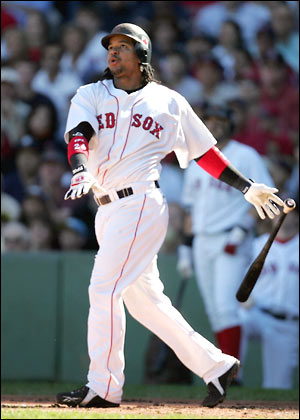 I haven’t been chiming in here nearly enough, and I couldn’t resist taking a look at this year’s team over/unders. A lot of this is guess work, and I fully expect to look stupid on a bunch of them, but it’s fun as hell nonetheless. American League today, National League tomorrow. For entertainment purposes only:
I haven’t been chiming in here nearly enough, and I couldn’t resist taking a look at this year’s team over/unders. A lot of this is guess work, and I fully expect to look stupid on a bunch of them, but it’s fun as hell nonetheless. American League today, National League tomorrow. For entertainment purposes only:
Baltimore Orioles Ð 65.5
Under: It’s usually not smart to take the under on a number this low, but this was a 70 win team with Erik Bedard and Miguel Tejada. I’m a fan of Adam Jones, but this division is extraordinarily tough, and I can’t see the Orioles touching 66 wins without some luck.
Boston Red Sox Ð 93.5
Over: Big Papi should regress a bit, but Manny should be Manny once again. Daisuke will likely be better, and Clay Buchholz could be a difference maker, albeit in a limited number of innings. As mentioned above, the AL East is very tough, but the Red Sox are an elite team that should beat up on the league’s also-rans.
Chicago White Sox Ð 79.5
Under: I like Nick Swisher, but not this much. This team aged very quickly, and it may get a lot worse before it gets better.
Cleveland Indians Ð 88.5
Over: They should top this handily, as they bring back a team that won 96 games (91 pythag) despite some below-expectation performances from several key positions. Should win the AL Central.
Detroit Tigers Ð 93.5
Under: They’ve certainly helped themselves this offseason, but there are too many players on this team that played over their heads in 2007, particularly Magglio Ordonez, Curtis Granderson, and Placido Polanco. They’ll be good, but 94 wins may be a stretch.
Kansas City Royals Ð 71.5
Under: I flipped a coin and it landed on tails. They should be in the 70-win range plus or minus a few. That said, if either Billy Butler or Alex Gordon really breaks out, this could end up looking very stupid.
Los Angeles Angels Ð 91.5
Over: This isn’t a great team per say, but they play in a very weak division. Look for them to run away with the West.
Minnesota Twins Ð 72.5
Over: Johan is gone, but there are still enough good players on this team for them to win 73 games. If Francisco Liriano truly is back in form, they could approach .500 again.
New York Yankees Ð 93.5
Under: Jeter, Abreu, Giambi, Damon, Matsui, and Posada are all another year older, and even A-Rod is in line for some some regression to the mean. Their young pitchers are very good, but when you rely on young pitchers… With Tampa Bay improving and the Red Sox still rolling along, this could be the year the Yankees finally miss the postseason.
Oakland Athletics Ð 73.5
Over: They received some good value in this year’s yard sale, and there are still some decent players left over. In a weak division, this season may not be as bad as some think.
Seattle Mariners Ð 86.5
Under: If I was a betting man, this may have been my bet. As good as Bedard and Felix are, the Mariners’ offense is very weak, and they far outpaced their run differential last season. Look for them to be in the high-70s.
Tampa Bay Rays Ð 73.5
Over: Another easy one. The Rays will win more than they lose this year, and if they bring in Barry Bonds, the sky is the limit. Evan Longoria is the best prospect in baseball, and he’s only the next one on the assembly line.
Texas Rangers Ð 74.5
Under: Texiera is gone, and this team is very thin around the margins (a key injury or two could really hurt). They’ll have trouble keeping up with the A’s and the Mariners.
Toronto Blue Jays Ð 85.5
Under: The Blue Jays aren’t a bad team by any means, but they’re not particularly good either. In this division, that’s not going to cut it. They would have a very good shot in the NL West or Central.
Feedback? Write a comment, or e-mail the author at mike(AT)squawkingbaseball.com
posted by
Shawn, on March 14th, 2008 at 07:18 am, in category Uncategorized
Tango posted projected standings from three different systems yesterday, giving us an opportunity to pick them apart a bit. Here are the updated versions of each. Some thoughts:
- Projections will always look a bit conservative on the ends, since their won’t be any luck-based outliers. As you can see on the chart, the standard deviations for the three systems range from 7.97 to 8.60. By comparison, the real SD of win totals last year was 9.29.
- The individual team with the highest standard deviation across the three systems: the Rays, who are projected to win 89 games by both CHONE and PECOTA, but only 78 by CAIRO. Other teams high on that list: the Giants (72, 69, 79), Mariners (83, 73, 77), and White Sox (76, 77, 68). I’m only really surprised by the Giants, who may have a shot at 79 wins if all of the other NL West teams’ planes are hit by meteors.
- The teams with the lowest variation: Tigers (91, 91, 90), D-Backs (85, 86, 85), Indians (92, 93, 91), Astros (75, 73, 74), Braves (83, 85, 84), and Mets (92, 94, 92). If I had to pick one of these teams to break from these numbers, it would be Atlanta on the up side.
- Consensus division winners: Indians, Yankees, Angels, Cubs, Mets, and a tie between the D-Backs and Dodgers. The Angels and Mets win big, while the all of the other margins are two games or less.
- Consensus wild card teams: Red Sox and Brewers.
- Consensus best team in baseball: Yankees. Consensus worst team: Orioles, and not by a little bit.
- You’ll notice the win totals at the bottom: 2,425, 2,434, and 2,429 for CHONE, PECOTA, and CAIRO respectively. The real number, of course, should be 2,430 (81 x 30).
Feedback? Write a comment, or e-mail the author at shawn(AT)squawkingbaseball.com
posted by
Shawn, on March 12th, 2008 at 08:40 am, in category Uncategorized
Dave Pinto got me thinking with this post about Barry Bonds, so here’s my own quick-and-dirty experiment to see where Barry fits best. For sake of full disclosure, I said in October he would fit best in Anaheim, and recently suggested the Rays should roll the dice on him.
Assuming he would only have practical on-field utility to a contending team, and his value would be maximized as a DH, I only included AL teams that are projected to have winning records. That leaves us with the Yankees, Red Sox, Rays, Blue Jays, Indians, Tigers, and Angels.
The next step is to determine his value over the next best alternative for each club. We’ll assume that he would match last year’s 477 plate appearances and 55.2 VORP, although I think he’d have a great shot at beating both as a strict DH.
The tricky part is determining who he would replace in each team’s lineup. If we’re not considering defense at all, here’s the list (VORP/477 is projected VORP per 477 plate appearances, courtesy of PECOTA. VUBB is “Value Under Barry Bonds” for those 477 PAs):
| |
|
|
|
|
|
|
PLAYER
|
TEAM
|
VORP/477 |
VUBB |
|
|
Lyle Overbay |
TOR |
4.34 |
50.86 |
|
|
Juan Rivera |
LAA |
10.63 |
44.57 |
|
|
Marcus Thames |
DET |
11.40 |
43.80 |
|
|
Ryan Garko |
CLE |
11.45 |
43.75 |
|
|
Kevin Youkilis |
BOS |
13.40 |
41.80 |
|
|
Johnny Damon |
NYY |
15.45 |
39.75 |
|
|
Jonny Gomes |
TB |
18.00 |
37.20 |
|
Keep in mind, this list assumes Frank Thomas, Travis Hafner, and David Ortiz are regulars at first base. Yikes.
Being a bit more realistic:
| |
|
|
|
|
|
|
PLAYER
|
TEAM
|
VORP/477 |
VUBB |
|
|
Juan Rivera |
LAA |
10.63 |
44.57 |
|
|
Marcus Thames |
DET |
11.40 |
43.80 |
|
|
Johnny Damon |
NYY |
15.45 |
39.75 |
|
|
Jonny Gomes |
TB |
18.00 |
37.20 |
|
|
Frank Thomas |
TOR |
22.22 |
32.98 |
|
|
Travis Hafner |
CLE |
26.25 |
28.95 |
|
|
David Ortiz |
BOS |
36.28 |
18.92 |
|
A couple notes. First off, Juan Rivera projects better than Garret Anderson offensively, but slightly worse than Gary Matthews Jr., which is why he makes both lists. Also, an argument could be made that the Yankees would be better off with Johnny Damon in left field in place of Hideki Matsui, assuming Bonds was the DH. I, however, will not be making that argument.
Obviously, I’m not surprised that the Angels top this list. I’ve said from the start that they would be the most logical fit, if we were in a vacuum.
The Tigers certainly jump out, as well. With Thames and Jacque Jones platooning, that number may actually be a bit smaller, but it’s significant nonetheless. But if there’s any team with chemistry concerns, it’s Detroit, who could start a nuclear war by putting Bonds and Gary Sheffield in the same locker room.
The Yankees’ situation is also a bit complicated, albeit for more benign reasons. With Melky Cabrera locked in at center field (for now, at least), the Yankees are left with Jason Giambi, Damon, and Matsui to cover first base, left field, and DH, respectively. Damon and Matsui have played a combined six games at first base in their careers (all by Damon in the last two seasons), so if Joe Girardi wants to move Giambi off of first, one of the three has to sit. Adding Bonds as an everyday DH could potentially leave two of the three on the bench, with the Yankees more or less eating $30 million+ in salary. From a pure optimization standpoint, Bonds would certainly have value, but I’m not sure if the Yankees would be willing to take that hit.
Three of these teams (the Angels, Rays, and Yankees) should seriously consider this. Winning doesn’t always breed chemistry, but it’s definitely worth a shot.
Feedback? Write a comment, or e-mail the author at shawn(AT)squawkingbaseball.com
posted by
Shawn, on March 11th, 2008 at 07:17 am, in category Uncategorized
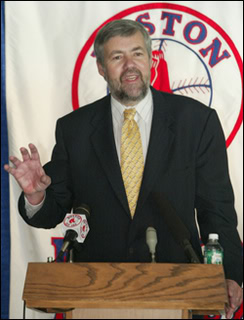 I haven’t read the Bill James Gold Mine yet; it’s a very busy reading season if you’re a baseball fan. But I can honestly say I’ve read just about everything else Bill has ever written, and his style, objectivity, and utter creativity inexorably changed my view of the world growing up.
I haven’t read the Bill James Gold Mine yet; it’s a very busy reading season if you’re a baseball fan. But I can honestly say I’ve read just about everything else Bill has ever written, and his style, objectivity, and utter creativity inexorably changed my view of the world growing up.
I think Bill’s gotten a bad rap in sabermetric circles the past few years, but I have a tough time evaluating his recently published work since he is obviously (and rightfully) saving his best for the Red Sox. There’s one issue, though, that he has always been ahead on, at least philosophically: the next key area of sabermetric research should be on the macro level.
While there is still plenty of work to be done on the micro level (i.e. how many wins is player x worth?), we have reached a point of diminishing returns. This is especially true from a team-by-team business standpoint. A club that became statistically inclined in the 1980s would have a much greater competitive advantage than a team that does so today, because of the proliferation of statheads across the industry.
Consider: from 2005 to 2006, the Tigers went from 71-91 and twenty-four games out of the playoffs, to 95-67 and their first World Series appearance in over two decades. According to the Forbes estimates, their total revenue intake increased from $146 million to $170 million, a 16% gain. The league as a whole gained 8%. So in an extreme case (going from an also-ran to league champion), a team can double industry-wide growth. But even then, if that same team has a down season later on, much of that growth will be given back.
In fact, for much of the sport’s history, the only way for a given franchise to form truly sustainable growth is for the league as a whole to do so. This involves improving the product, or at least increasing its saleability. Shortening the length of games or building new stadiums would be examples of the former; the wild card is a perfect example of the latter.
That said, I’ve never been overly thrilled with Bill’s specific ideas in this realm. There’s a very fine line here; fans are generally hesitant to accept anything that they think will affect competition (as we’ve covered before, the masses are still pretty naive about the eight-team playoff format).
If you’ve spent more than five minutes on this blog, you know I’m anything but a “purist.” But from a strict business sense, it’s tough to say whether limiting pitching changes, as Bill has suggested, would cause much of an uproar (I doubt it, at least at the start). The rules have changed so little in the past century that it’s almost impossible to predict.
But this type of issue needs to become an area of focus, particularly within league and team offices. Baseball’s business has grown just about four-fold in the past fifteen years. That is an incredible difference, and it’s been driven by factors other than micro-level statistical analysis.
Feedback? Write a comment, or e-mail the author at shawn(AT)squawkingbaseball.com
posted by
Shawn, on March 8th, 2008 at 01:20 am, in category Uncategorized
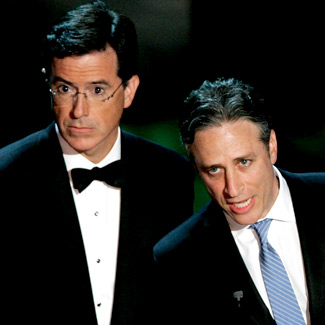 If you like movies, here’s something you’ll definitely enjoy. Ebert & Roeper posted their entire video archive (at least all that still exists), going back to the days when Gene Siskel co-hosted the show. There isn’t much from the very early days of the program (most of the clips from 1975-1985 were destroyed), but the collection is impressive nonetheless.
If you like movies, here’s something you’ll definitely enjoy. Ebert & Roeper posted their entire video archive (at least all that still exists), going back to the days when Gene Siskel co-hosted the show. There isn’t much from the very early days of the program (most of the clips from 1975-1985 were destroyed), but the collection is impressive nonetheless.
This type of thing is becoming more and more commonplace. The respective websites for the Daily Show with Jon Stewart and the Colbert Report have every second of every episode in each show’s history, and the WB network is actually considering coming back as an internet-only, ad-supported video portal.
As we’ve discussed before, MLB.com has taken a much different approach, remaining closed off in a number of areas and keeping a great deal of content behind a pay-wall. This fits in with most of MLB’s other strategies, leveraging monopoly power to increase prices.
The problem is that MLB.com is only a monopoly when we take an extremely small scale view of their market. Yes, they have a pretty solid monopoly on quality baseball highlights, streaming live games, archived games, condensed games, and historical clips. But in the same sense, Ebert & Roeper have a monopoly on Ebert & Roeper content. Yet they are giving away every piece of footage they have for free.
In reality, MLB.com is only a very small part of an enormous (and rapidly growing) market for online videos. Music, movies, and television shows are all moving toward free digital distribution, albeit at differing rates. These other outlets have all come to grips with this new reality, and done what is necessary to compete. MLB.com, in taking an anti-competitive approach, continues to unknowingly hurt itself.
Feedback? Write a comment, or e-mail the author at shawn(AT)squawkingbaseball.com
posted by
Shawn, on March 7th, 2008 at 12:05 pm, in category Uncategorized
I’m always in the mood for some shameless self promotion, so here’s the latest (side panel).
 This is from RotoTimes.com, a site I actually like when it doesn’t try to delve too far into analysis:
This is from RotoTimes.com, a site I actually like when it doesn’t try to delve too far into analysis: Yesterday I wrote about Major League Baseball’s presence in the Far East, and the Wall Street Journal conveniently
Yesterday I wrote about Major League Baseball’s presence in the Far East, and the Wall Street Journal conveniently  In case you missed it, we ran through the American yesterday. Now on to the senior circuit. For
In case you missed it, we ran through the American yesterday. Now on to the senior circuit. For  I haven’t been chiming in here nearly enough, and I couldn’t resist taking a look at this year’s team over/unders. A lot of this is guess work, and I fully expect to look stupid on a bunch of them, but it’s fun as hell nonetheless. American League today, National League tomorrow. For
I haven’t been chiming in here nearly enough, and I couldn’t resist taking a look at this year’s team over/unders. A lot of this is guess work, and I fully expect to look stupid on a bunch of them, but it’s fun as hell nonetheless. American League today, National League tomorrow. For  I haven’t read the Bill James Gold Mine yet; it’s a very busy reading season if you’re a baseball fan. But I can honestly say I’ve read just about everything else Bill has ever written, and his style, objectivity, and utter creativity inexorably changed my view of the world growing up.
I haven’t read the Bill James Gold Mine yet; it’s a very busy reading season if you’re a baseball fan. But I can honestly say I’ve read just about everything else Bill has ever written, and his style, objectivity, and utter creativity inexorably changed my view of the world growing up. If you like movies, here’s
If you like movies, here’s